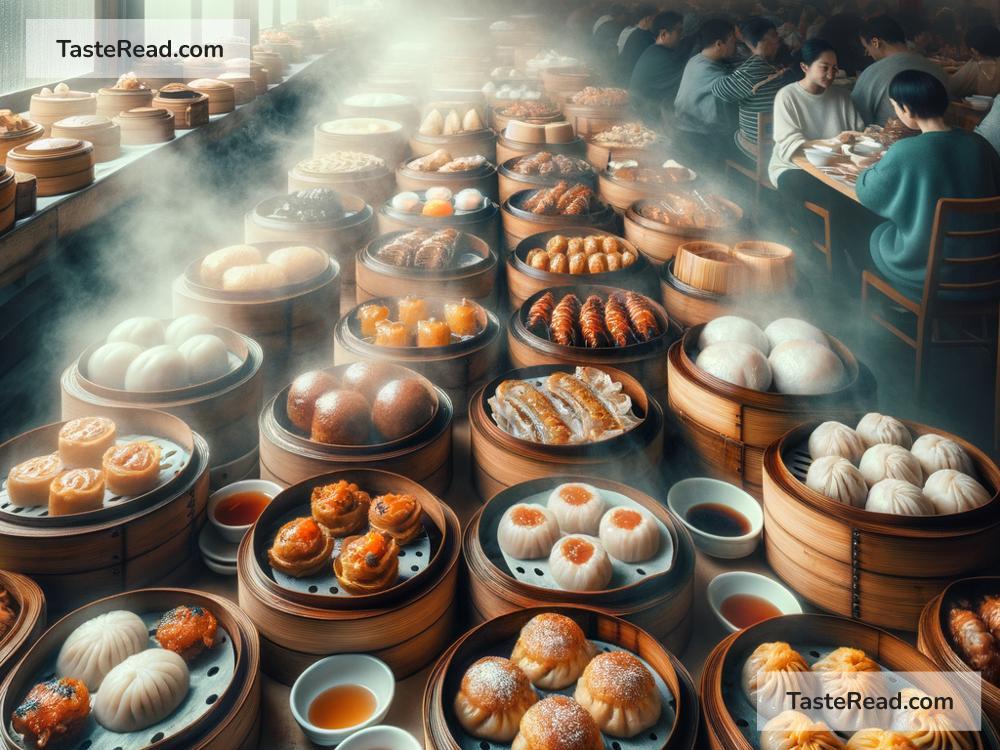How the Chinese Dim Sum Became a Culinary Tradition: A Journey Through Time and Taste
Imagine sitting around a bustling table with family and friends, sharing stories and laughs, while trays of steaming, delicious bites make their way around. This is the heartwarming scene of a traditional dim sum meal, a culinary tradition that has journeyed far from its origins in ancient China to become a beloved experience worldwide.
Dim sum, which literally means “touch the heart,” does precisely that. It’s more than just food; it’s an experience, a way to gather and share joy. But how did these bite-sized delights become such a significant part of culinary traditions? Let’s dive into the fascinating journey of dim sum through time and taste.
The Ancient Beginnings
The story of dim sum begins during the times of the Silk Road, a network of trade routes connecting China with the Mediterranean. Travelers, traders, and weary journeyers needed places to rest along these routes. Tea houses sprang up to provide a respite, serving tea to refresh the travelers. It was soon discovered that tea helps with digestion, so small snacks were offered alongside, marking the humble beginnings of what would evolve into dim sum.
A Royal Treat
From these practical origins, dim sum made its way into the lavish courts of the Chinese emperors. Royal chefs competed to create the most exquisite and delicate dishes to impress the emperors and their guests. These bite-sized delights were perfect for sampling a variety of flavors without becoming too full. This period saw the refinement of dim sum, making it an art form, with each piece crafted to perfection.
The Cantonese Influence
While dim sum was enjoyed across China, it was in the southern province of Guangdong, and its capital, Guangzhou (known to many in the West as Canton), where it truly flourished. Guangzhou’s location as a trading port meant that it was exposed to a plethora of ingredients and culinary influences. The Cantonese people embraced this, refining dim sum to incorporate new tastes and techniques. Dim sum became an integral part of Cantonese culture, with families and friends gathering for “yum cha” (drinking tea) and sharing dim sum dishes. This tradition of morning and early afternoon feasting spread across the region.
Spreading Wings
The 19th and early 20th centuries saw significant waves of Chinese emigration. Wherever Chinese communities established themselves, they brought with them their customs and food traditions. Dim sum was no exception. Initially, these meals were mostly enjoyed within the immigrant communities, in neighborhood tea houses and small eateries. However, as interest in Chinese cuisine grew, so did the curiosity around dim sum.
Global Recognition
Today, dim sum is enjoyed globally, far beyond the borders of China. From London to Los Angeles, dim sum restaurants range from the traditional to the innovative, offering everything from classic shrimp dumplings (har gow) and pork buns (char siu bao) to modern fusion interpretations. The tradition of gathering around a table and sharing these small dishes has touched the hearts of people around the world, transcending cultural and linguistic barriers.
The Dim Sum Table Today
A traditional dim sum meal involves small plates of various dishes, shared among everyone at the table. The selection is vast, including steamed buns, dumplings, rice rolls, and sweet desserts. Tea remains an essential part of the meal, aiding in digestion and complementing the flavors of the dim sum.
In many places, the experience of dim sum has retained its traditional roots, with carts wheeled between tables, from which diners select their dishes. This adds an element of surprise and delight, as you never know exactly what might appear next.
A Culinary Tradition That Touches the Heart
Dim sum has come a long way from its origins on the ancient Silk Road. It has evolved from a simple snack to accompany tea to a sophisticated culinary tradition that has won hearts worldwide. Its journey is a testament to the power of food to bring people together, connecting us across different times, cultures, and geographies.
Whether you’re a seasoned dim sum aficionado or new to the experience, the next time you sit down to a dim sum meal, remember the rich history and journey of these small bites that truly “touch the heart.”


